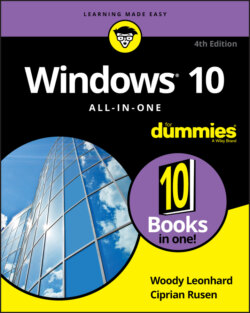Читать книгу Windows 10 All-in-One For Dummies - Ciprian Adrian Rusen, Woody Leonhard - Страница 63
Virtual desktops and task view
ОглавлениеWindows has had virtual (or multiple) desktops since Windows XP, but before Windows 10, you had to install a third-party app — or something like Sysinternals desktop, from Microsoft — to get them to work. Windows 10 implements virtual desktops (Figure 2-14) in a way that is useful.
FIGURE 2-14: Task view (shown here on top with the new Timeline feature below) displays all the multiple desktops you’ve set up.
Don’t let the terminology freak you out: Virtual desktops are just multiple desktops and vice versa. If you want to sound cool, you can talk about optimizing your virtual desktops, but people in the know will realize you’re just flipping between multiple desktops.
Multiple desktops are handy if you tend to multitask. You can set up one desktop to handle your mail, calendar, and day-to-day stuff, and another desktop for your latest project or projects. Got a crunch project? Fire up a new desktop. It’s a great way to put a meta-structure on the work you do every day.
To start a new desktop, press Win+Ctrl+D. To see all available desktops, plus your Timeline, click the Task View icon to the right of the Windows 10 Search bar. Windows can be moved between desktops by right-clicking and choosing Move To. Alt+Tab still rotates among all running windows. Clicking an icon in the taskbar brings up the associated program, regardless of which desktop it’s on.
Another nice feature introduced in the May 2020 update is that you can name virtual desktops anyway you want to help you keep track of which is which. It took Microsoft a long time to realize that this tiny improvement makes a world of difference.
